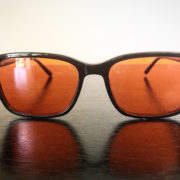What is Circadian Lighting And Why It’s Important To Understand Light?
Light is like a double-edged sword. It can improve energy levels, mood, performance, sleep and body regeneration by enhancing robust circadian rhythms. In contrast, light exposure at the wrong time can delay sleep onset by inhibiting the secretion of the regenerative hormone melatonin at night.
Circadian Rhythm Sensitivity To Light
For millions of years, humans evolved under natural light, and all physiological processes have been adapted to different light frequencies. Our eyes are supposed to see the regenerative morning light at around 40 LUX (LUX is a metric for light intensity) and bright natural light during the day at 100 000 – 130 000 LUX. Exposure to bright natural light has a profound effect on energy metabolism and cognitive brain function. Hormones and neurotransmitter exhibit a light-dependent pulsatile release according to the organisms circadian rhythm.
The jetlag we suffer after a transatlantic flight is nothing else but a circadian mismatch in which hormones and neurochemicals are still released according to departure time zone and yet not adapted to destination time. The consequences are symptoms like insomnia, fatigue, cravings at an abnormal time of the day, headaches and many more.
The exposure to circadian time cues efficiently alleviates these symptoms and light is one of them. If you want to explore more information about the importance of circadian rhythms and get deeper insights into the bondage between human and nature and improve your sleep pattern, I would recommend reading my book Sleep Timer.
Circadian rhythms are the cornerstone of a healthy body and mind and if you want to optimize your lifestyle or the environment start from there.
Circadian Lighting For Home
Unfortunately, in today’s reality, it is almost impossible to spend much time in daylight outside, which makes it necessary to improve the artificial light conditions of our indoor environments. Adapting the indoor illumination to our biological needs can have a profound impact on our daily wellbeing and sleep at night. Daylight exposure is critical for robust circadian rhythms which indirectly impacts sleep onset at night.
A good baseline to get the beneficial effects of daylight is around 10 000 LUX. As you may notice from the list below, indoor illumination has much lower brightness than natural sunlight even on a cloudy day.
Examples of Light Intensity Levels
- Bright sunlight; 120 000 LUX
- Bright sunlight behind a window; 70 000 LUX
- A partly sunny, partly cloudy day; 10 000 – 20 500 LUX
- Typical overcast day; 1000 – 1500 LUX
- Office lighting with workplace next to the window; 1000 LUX
- Supermarket lighting; 750 LUX
- Normal office light; 500 LUX
- Childcare centre; 500 LUX
- Gymnasium; 200 – 500; LUX
- Sunset and sunrise; 40 – 400 LUX
- Street Lights; 320 LUX
- School classroom, university illumination; 250 LUX
- Home lighting; 150 – 200 LUX depending on the light source
- Working areas which do not imply visual tasks; 150 LUX
- Candle Light; 50 LUX
- Twilight; 10 LUX
- Starlight; less than 1 LUX
- Full moon at clear night; 0.27 LUX
Circadian Rhythm Light Bulbs
If exposure to natural light is not possible, particularly during the winter months, consider using daylight simulators in the morning. The daylight simulators emit bright light at 10 000 LUX. Install the dawn simulator, (so-called circadian lighting) in rooms where you spend some time in the morning, such as the bathroom or kitchen.
This way, the light exposure happens by default. Ten minutes in bright light are enough to enhance the amplitude of circadian rhythms. If you have insomnia issues, try to get as much natural light as possible during the day.
On the other hand, a light intensity of only 10 LUX at night can interrupt sleep. Therefore you shall avoid blue light exposure in the evening or use the blue light blocking glasses.
Here are my top 4 recommended products that can significantly improve the light in your home or workspace environment during the day.
Tools to improve your daylight environment:
Tools to improve your evening light environment:
Install free software on all screens: www.justgetflux.com and consider buying effective blue light blocking glasses for sleep.
If you want much more in-depth info on how to choose effective blue light blocking glasses, then you should take a moment and read this article.






